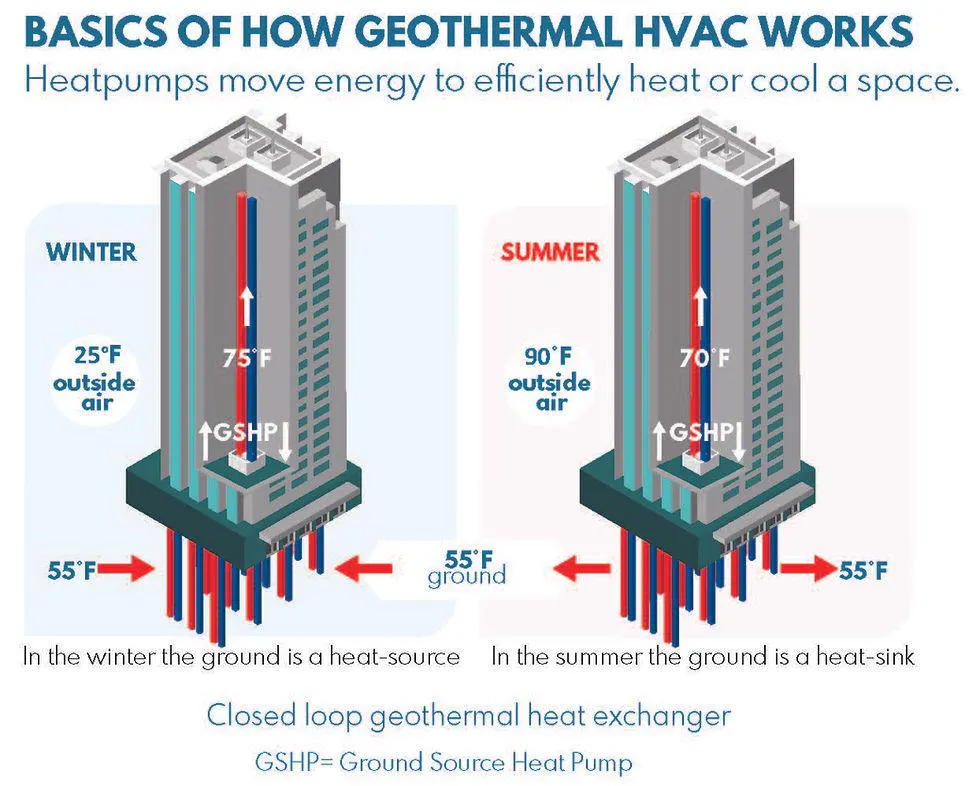State of Geothermal Heating in New York
Geothermal heating and cooling cuts building emissions by using underground temperatures. New York initiatives are making systems more accessible and affordable.

Geothermal heating and cooling has been around for a long time, and is now gaining renewed attention as a potential solution to decarbonize climate control in buildings, which account for approximately a third of the carbon pollution in the U.S. This technology taps into a temperature gradient below Earth's surface, which can drive nearly any HVAC system, for both heating and cooling, and significantly reduce carbon emissions. Joselyn Lai, co-founder of Bedrock Energy, is a leader of the charge in this field, focusing on installing geothermal heating pumps in large commercial buildings.
Bedrock Energy, founded in 2022, is a startup that aims to decarbonize climate control by installing geothermal heat pumps in large commercial buildings. The company drills up to 2,000 feet below Earth's surface to tap into a temperature gradient that remains consistent across 55 to 85 degrees Fahrenheit. Early adopters of Bedrock's technology include real estate firms with net-zero goals, highlighting the growing interest in decarbonization by the real estate sector.
Other companies like Dandelion Energy offer geothermal heating and cooling systems to residential homeowners in the Northeast. Dandelion's mission is to make renewable geothermal technology more accessible and affordable for homeowners, helping to reduce carbon emissions from home heating and cooling. They have recently celebrated the passing of a new geothermal $5,000 tax credit, stating it will encourage more New Yorkers to transition to geothermal heating and cooling.
Geothermal heating and cooling systems can significantly reduce property cooling costs and carbon emissions. By utilizing the temperature gradient below Earth's surface, these systems can provide efficient climate control, reducing the energy consumption and carbon footprint of buildings. A study comparing the cooling costs and carbon emissions of skyscrapers using traditional HVAC systems versus those with geothermal heat pumps showed a substantial reduction in costs and emissions when using the latter.

Geothermal heat pumps can reduce carbon emissions by 75–85% compared to gas or oil heating. For example, a 1,500 sq ft house heated with oil uses 750 gallons of fuel per year, which produces about 17,000 lbs of carbon dioxide. The same house heated with geothermal technology uses 7,200 kilowatt hours of energy, which today is equivalent to around 4,500 lbs of carbon dioxide, but as more electricity is generated by renewables, even this carbon dioxide due to electricity use is rapidly decreasing. This would be a yearly reduction of 12,500 lbs of carbon dioxide, which is the equivalent of removing one car from the road for a year.
Governor Kathy Hochul recently signed legislation (S.6604/A.6949) to minimize barriers to accessing geothermal heating and cooling systems in New York. The legislation aims to reduce costs for installing geothermal wells, helping the state meet its building decarbonization goals.
Ready to Start Earning?
Join thousands of users who are already earning rewards while helping the environment.